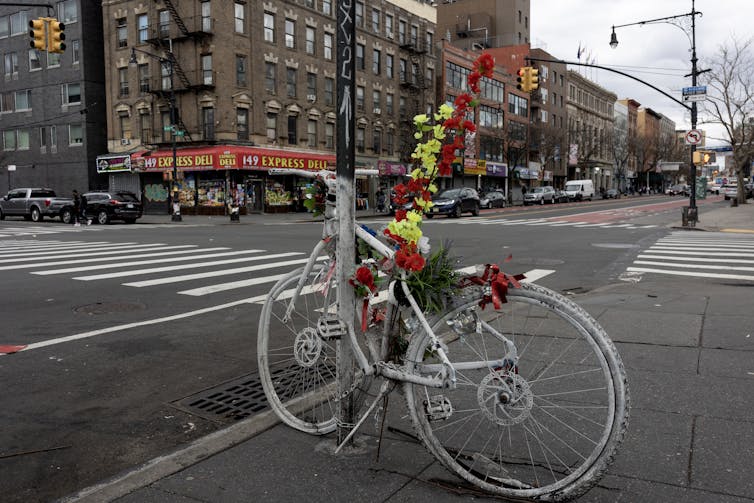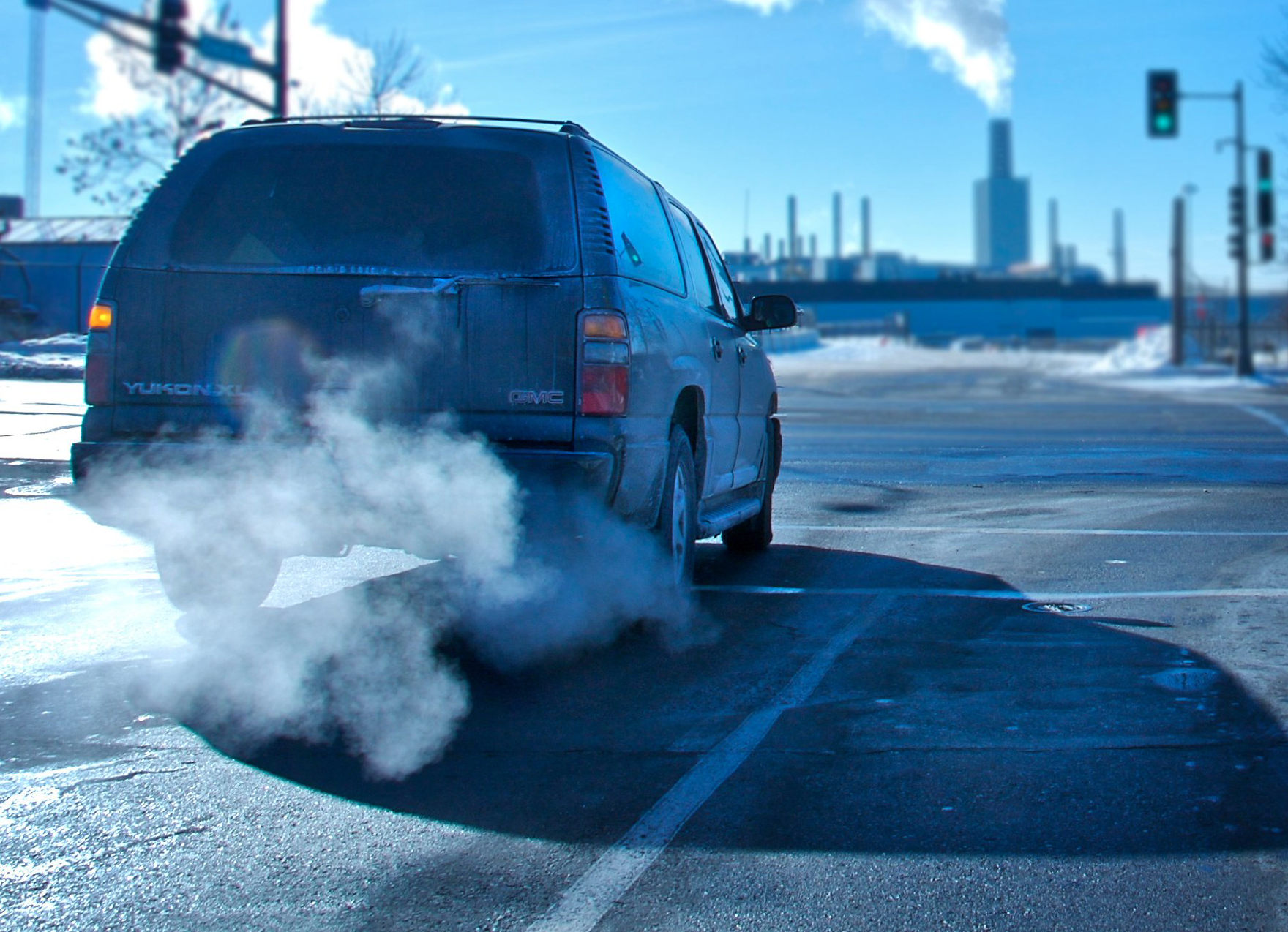This article originally appeared on The Conversation and is republished with permission.
“Can you name the truck with four-wheel drive, smells like a steak, and seats 35?”
Back in 1998, “The Simpsons” joked about the Canyonero, an SUV so big that they were obviously kidding. At that time, it was preposterous to think anyone would drive something that was “12 yards long, two lanes wide, 65 tons of American Pride.”
In 2024, that joke isn’t far from reality.
And our reality is one where more pedestrians and bicyclists are getting killed on U.S. streets than at any time in the past 45 years – over 1,000 bicyclists and 7,500 pedestrians in 2022 alone.
Vehicle size is a big part of this problem. A recent paper by urban economist Justin Tyndall found that increasing the front-end height of a vehicle by roughly four inches (10 centimeters) increases the chance of a pedestrian fatality by 22 percent. The risk increases by 31 percent for female pedestrians or those over 65 years, and by 81 percent for children.
It’s hard to argue with physics, so there is a certain logic in blaming cars for rising traffic deaths. In fact, if a bicyclist is hit by a pickup truck instead of a car, Tyndall suggests that they are 291 percent more likely to die.
Yet automakers have long asserted that if everyone simply followed the rules of the road, nobody would die. Vehicle size is irrelevant to that assertion.
My discipline, traffic engineering, acts similarly. We underestimate our role in perpetuating bad outcomes, as well as the role that better engineering can play in designing safer communities and streets.

Millions of road deaths
How bad are the bad outcomes? The U.S. has been tracking car-related road deaths since 1899. As a country, we hit the threshold of one million cumulative deaths in 1953, two million in 1975 and 3 million in 1998. While the past several years of data have not yet been released, I estimate that the U.S. topped four million total road deaths sometime in the spring of 2024.
How many of those are pedestrians and bicyclists? Analysts didn’t do a great job of separating out the pedestrian and cyclist deaths in the early years, but based on later trends, my estimate is that some 930,000 pedestrians and bicyclists have been killed by automobiles in the U.S.
How many of those deaths do we blame on big cars or bad streets? The answer is, very few.
As I show in my new book, “Killed by a Traffic Engineer: Shattering the Delusion that Science Underlies our Transportation System,” the National Highway Traffic Safety Administration calls road user error the “critical reason” behind 94% of crashes, injuries and deaths.
Crash data backs that up.
Police investigate crashes and inevitably look to see which road users, including drivers, pedestrians and cyclists, are most at fault. It’s easy to do because in almost any crash, road user error appears to be the obvious problem.
This approach helps insurance companies figure out who needs to pay. It also helps automakers and traffic engineers rationalize away all these deaths. Everyone – except the families and friends of these 4 million victims – goes to sleep at night feeling good that bad-behaving road users just need more education or better enforcement.
But road user error only scratches the surface of the problem.
Who creates dangerous streets?
When traffic engineers build an overly wide street that looks more like a freeway, and a speeding driver in a Canyonero crashes, subsequent crash data blames the driver for speeding.
When traffic engineers provide lousy crosswalks separated by long distances, and someone jaywalks and gets hit by that speeding Canyonero driver, one or both of these road users will be blamed in the official crash report.
And when automakers build gargantuan vehicles that can easily go double the speed limit and fill them with distracting touchscreens, crash data will still blame the road users for almost anything bad that happens.
These are the sorts of systemic conditions that lead to many so-called road user errors. Look just below the surface, though, and it becomes clear that many human errors represent the typical, rational behaviors of typical, rational road users given the transportation system and vehicle options we put in front of them.
Look more deeply, and you can start to see how our underlying crash data gives everyone a pass but the road users themselves. Everyone wants a data-driven approach to road safety, but today’s standard view of crash data lets automakers, insurance companies and policymakers who shape vehicle safety standards off the hook for embiggening these ever-larger cars and light-duty trucks.
It also absolves traffic engineers, planners and policymakers of blame for creating a transportation system where for most Americans, the only rational choice for getting around is a car.
Understanding road behavior
Automakers want to sell cars and make money. And if bigger SUVs seem safer to potential customers, while also being much more profitable, it’s easy to see how interactions between road users and car companies – making seemingly rational decisions – have devolved into an SUV arms race.
Even though these same vehicles are less safe for pedestrians, bicyclists and those in opposing vehicles, the current data-driven approach to road safety misses that part of the story.
This can’t all be fixed at once. But by pursuing business as usual, automakers and traffic engineers will continue wasting money on victim-blaming campaigns or billboards placed high over a road telling drivers to pay attention to the road.
A better starting point would be remaking the U.S.’s allegedly data-driven approach to road safety by reinventing our understanding of the crash data that informs it all.
The key is starting to ask why. Why did these road users act as they did? Why didn’t they follow the rules that were laid out for them? Bad road user behavior shouldn’t be excused, but a bit of digging below the surface of crash data unearths a completely different story.
Figuring out which road user is most at fault may be useful for law enforcement and insurance companies, but it doesn’t give transportation engineers, planners, policymakers or automakers much insight into what they can do better. Even worse, it has kept them from realizing that they might be doing anything wrong.






